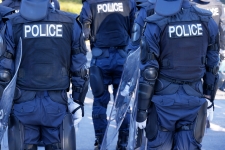


Security teams may face a range of networking and connectivity challenges, including the need for reliable and secure communications in remote or disaster-affected areas, the need for real-time data and video transmission, and the need for uninterrupted access to critical
applications and systems.
When choosing high-performance networking equipment for emergency services, there are specific requirements that are necessary, including the need for rugged hardware that will operate in harsh mobile environments, as well as the ability to access certain bandwidths like FirstNet Band 14. Always-on connectivity is also vital for constant communication.
5Gstore takes all these considerations into account when we determine the right hardware, products, and services for your emergency response applications. We can recommend solutions that can help your teams establish and maintain secure Internet connectivity wherever they travel.
Contact Us for more info.
5G technology improves emergency response services by enabling faster and more reliable communication between emergency responders, facilitating real-time data sharing and coordination, supporting high-quality video streaming for remote assessments, and enhancing situational awareness for more effective decision-making.
Practical 5G network applications in emergency response services include real-time video consultations with medical professionals, IoT devices for monitoring and tracking patient vital signs, connected drones for aerial assessments and search and rescue operations, as well as mobile apps for reporting emergencies and receiving real-time updates.